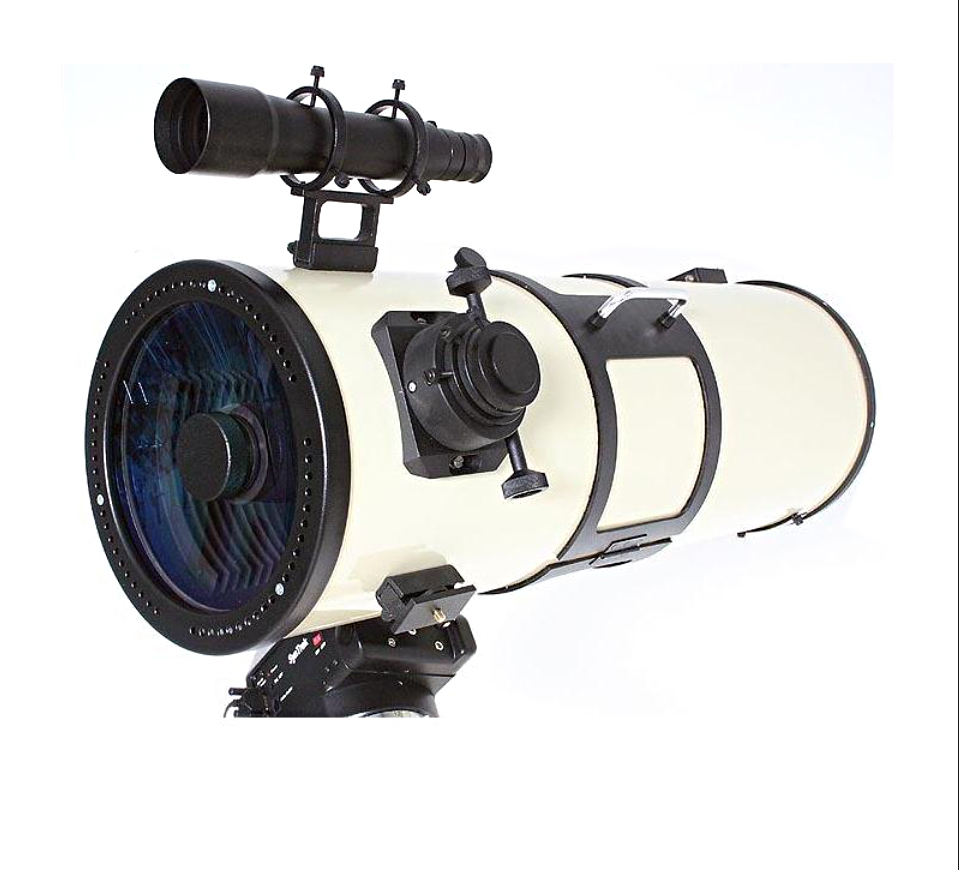JULY 2022
8 inch Aperture Telescopes part 3 – Maksutovs and other Catadioptric Telescopes.
An article in the author’s Astronomy Digest – https://www.ianmorison.com
Schmidt-Newtonian
A Schmidt–Newtonian telescope is a catadioptric telescopethat combines elements from both the Schmidt-Cassegrain and the Newtoniantelescopes. In this telescope design, aspherical primary mirror is combined with a Schmidt corrector plate, whichcorrects the spherical aberration and holds the secondary mirror. The resultingsystem suffers from less coma than aNewtonian telescope with a parabolic mirror (which is free of sphericalaberration but not free of coma) and, as the secondary mirror is supported bythe corrector plate, there are no diffraction spikes caused by a spider. They have typically one half the coma of aNewtonian of the same focal ratio so may not need a coma corrector whenimaging. A range of 6, 8 and 10 inch, f/4, telescopeswere manufactured by Meade in very heavy steel tubes but these can now only befound second hand. I have the 8 inchversion and it makes a very good imaging scope.
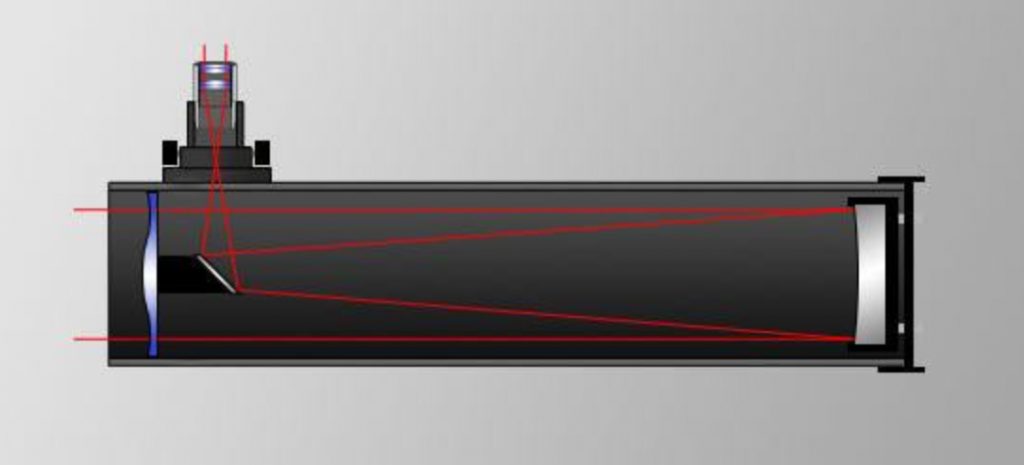
Maksutov Telescopes
The Maksutov Telescope is a catadioptric telescopedesign that combines a spherical mirror with a weakly negative meniscus correctorlens normally at the entrance of the telescope tube. The design reduces the problems of off-axisaberrations such as coma and was patented in 1941 by the Russian optician,Dmitri Dmitrievich Maksutov. There areto two variants; the “Gregory Maksutov” and the “RuttenMaksutov”. In the former, thesecondary is a silvered spot on the interior of the corrector plate and so musthave the same radius of curvature. Thislimits the focal ratio to values above f/14 so they will have long focallengths for their aperture. In thelatter, designed by Harrie Rutten, the secondary mirror is mounted on theinterior of the corrector plate and so can have a different radius of curvatureso allowing shorter focal ratios to beused. Neither type will producediffraction spikes.
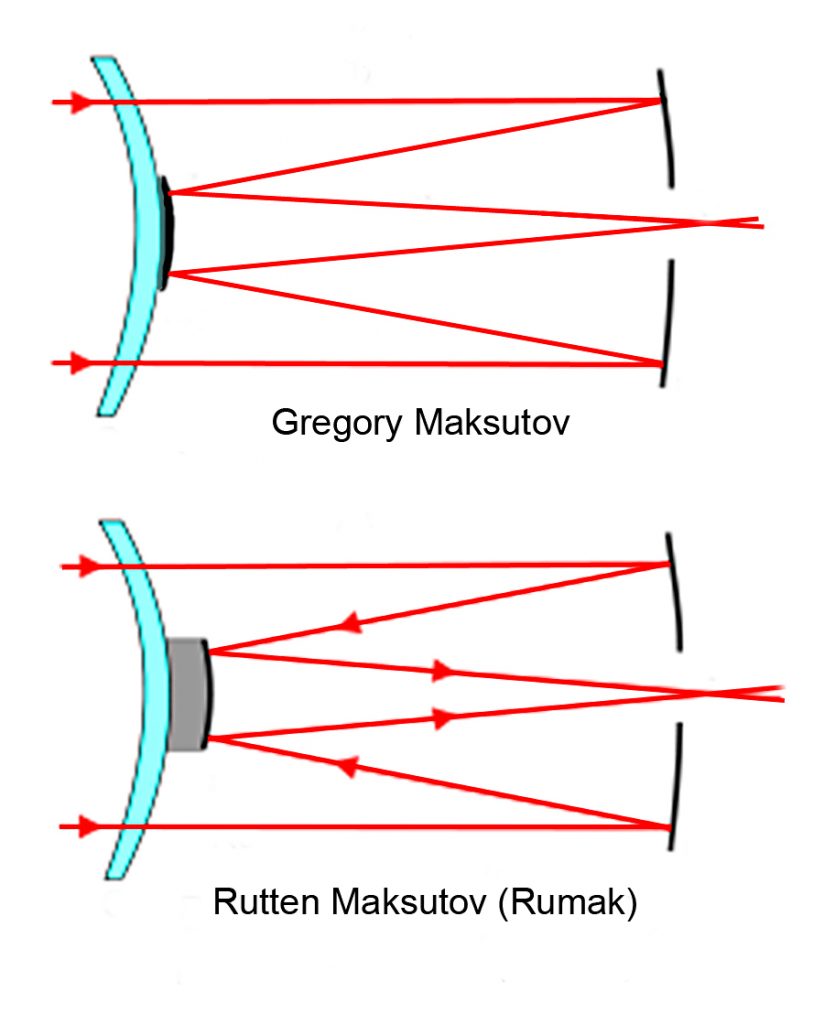
As the corrector plate is quitethick, the cost and weight goes up quickly with aperture so these are rarely found with apertures greater that ~200 mm. This thickness also tend to increase the tube interior’s cool down timeso these telescopes take the longest of all telescopes to cool down. All using full aperture corrector plates focusby moving the primary mirror so there can be some focus shift.
The lowest cost Maksutov in thisaperture range is the Sky-Watcher “SKYMAX 180mm Gregory Maksutov” at ~£1,060 having an f/15 focal ratio so giving a focal length of 2,700 mm. This is the longest focal length of all thetelescopes covered in these articles and perfect for observing or imaging smallangular diameter objects such as the planets, globular clusters and planetarynebula. A colleague has one and isproducing some wonderful close up lunar images.
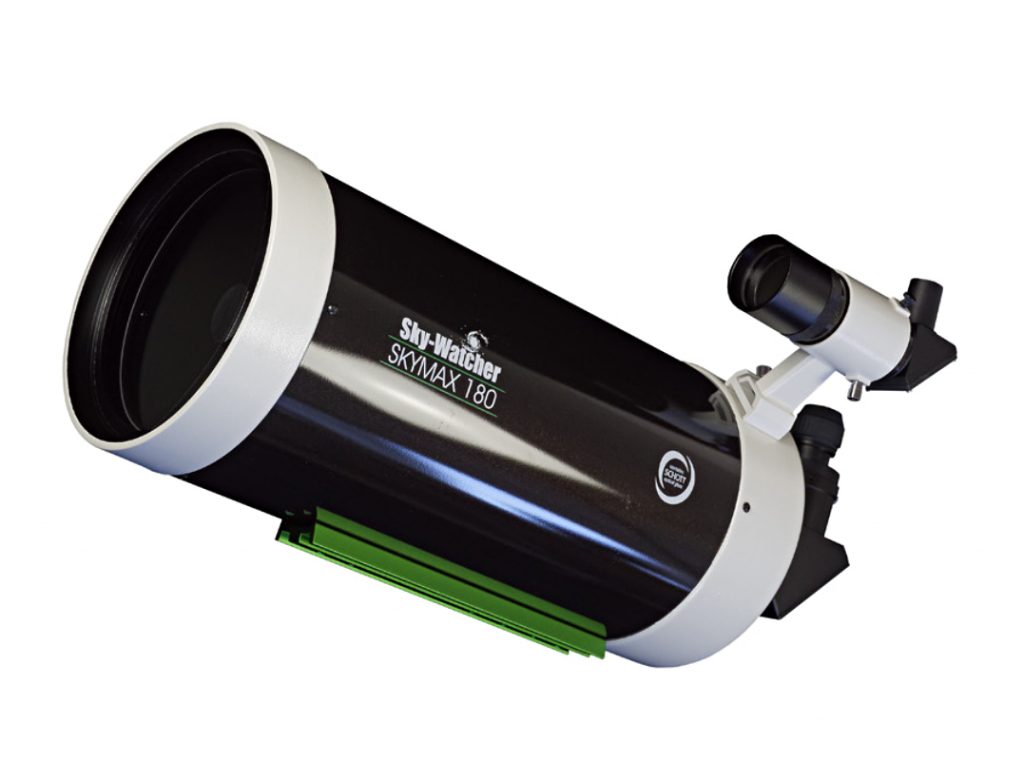
At theother end of the cost scale are the Intes-Micro, Rutten Maksutovs; their 178 mmaperture, ALTER M703, has a focal ration of f/10 (similar to aSchmidt-Cassegrain) and so a focal length of 1,780 mm whilst the ALTER M715 hasa focal ratio of F/15 thus a focallength of 2,670 mm. These incorporatecooling fans behind the primary mirrors and are superbly made. However they cost ~£3,000. Their central obstructions are a little lessthan an 8 inch Schmidt-Cassegrains (34%) at 32% (M703) and 27% (M715) – somaking the latter a superb planetary scope. Sadly, I do not have one of these but do have the smaller M500 – anf/10, 127 mm aperture, Rumak Maksutov and can attest to its build and image quality.
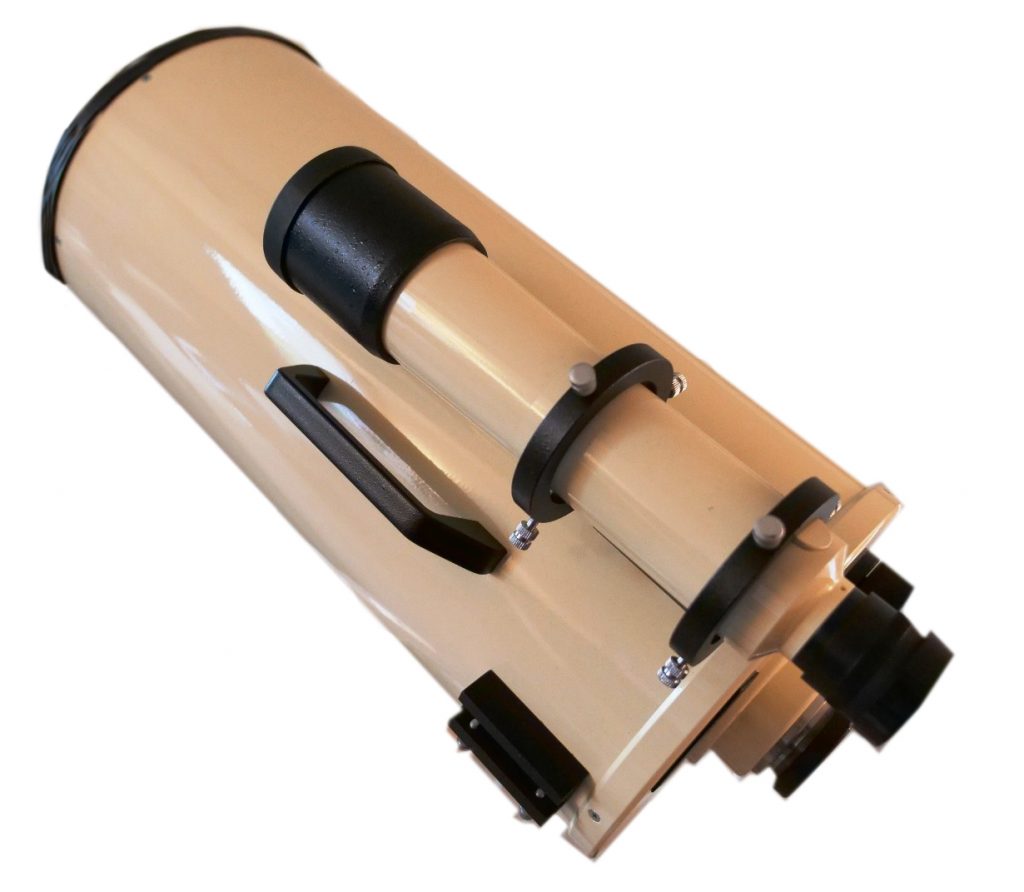
ASub-Aperture Maksutov – the Vixen VMC200L is made in Japan. In this design a small meniscus corrector lensis located directly in front of the secondary mirror so that light passesthrough it twice. As a result, dewingproblems are alleviated and thetelescope tube weighs less than a Maksutov with a full aperture corrector. With its open tube, it will also cool down faster than otherMaksutovs. It has a focal ratio of 9.75so a focal length of 1,950 mm – so is very similar in specification to an 8inch Schmidt-Cassegrain. The cost isalso very similar at ~£1,500. A reallynice feature of this telescope is the fact that it has a rack and pinionfocuser behind the primary mirror so there will be no focus shift whenfocussing. I do not have one, but I dohave the “sister” telescope VC200L, an astrograph which uses a 6thorder elliptical primary mirror and, like the Celestron Edge HDSchmidt-Cassegrains, incorporates a triplet lens assembly in the primary baffletube to give an aberration free flat field – perfect for astroimaging. They are beautifully made and the opticalperformance should be a little better than a Schmidt-Cassegrain.
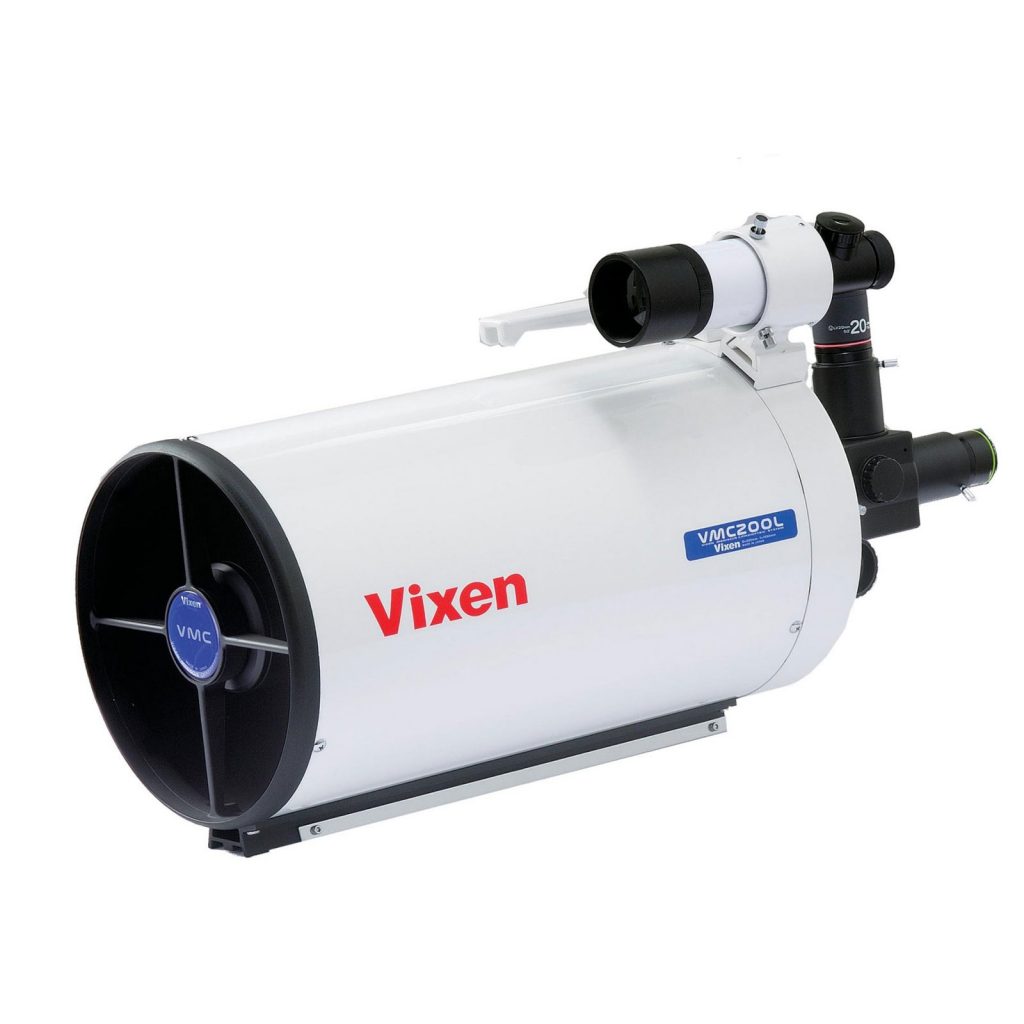
Maksutov-Newtonians
The MaksutovNewtonian design is a combination of the Newtonian reflector and Maksutovcorrecting lens. Standard Newtonianssuffer from coma around the edge of the field of view. The Maksutov correctorplate corrects this coma so producing coma-free stars across the field witharound one quarter of the coma exhibited by an equivalent Newtonian. It also corrects the spherical aberration of the primary mirror. Some have said they are like observing orimaging with an apochromat refractor! They are superb imaging scopes.
Perhaps the best, value for money, version is the Sky-Watcher EXPLORER 190mm Maksutov Newtonian DS Telescope at a cost of ~£1,300. This has a focal ratio of f/5.26 giving a focal length of 1,000 mm with a secondary obstruction of 33%.
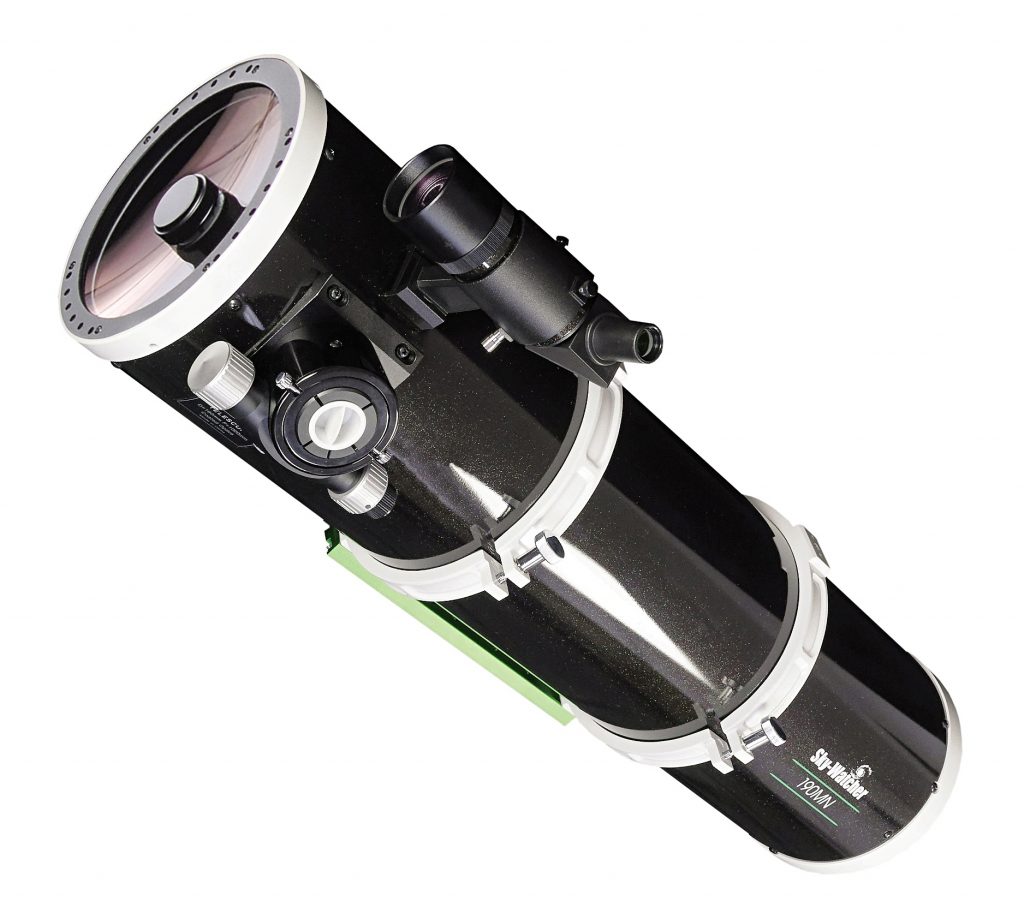
At the other end of the cost scale is the Intes-Micro ALTER MN 76 Maksutov-Newtonian Telescope at ~£2,800 from the “Widecreen Centre”. The telescope has a 178 mm aperture so, with a focal ratio of f/6, gives a focal length of 1,068mm. The secondary obstruction is just 20%. Its superb quality optics give a ~2 degree field of view when imaging. Having a closed tube, it will need time to acclimatise to ambient temperature. In order to minimise the secondary obstruction these use a very low profile focuser at the focal plane which is very close to the telescope tube edge. Having only a 20% secondary obstruction it makes a superb telescope when using a Barlow Lens for planetary observing and imaging. Given one has a sturdy mount this would be a wonderful telescope to own.
